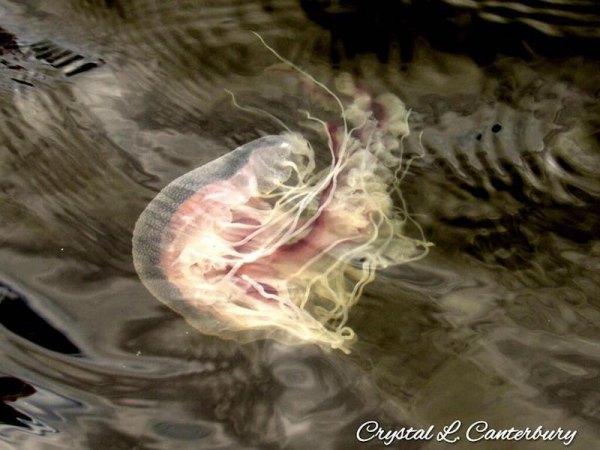A Sea of Jellies
Q. What do sharks eat for lunch? A. Peanut-butter-and-jellyfish sandwiches!
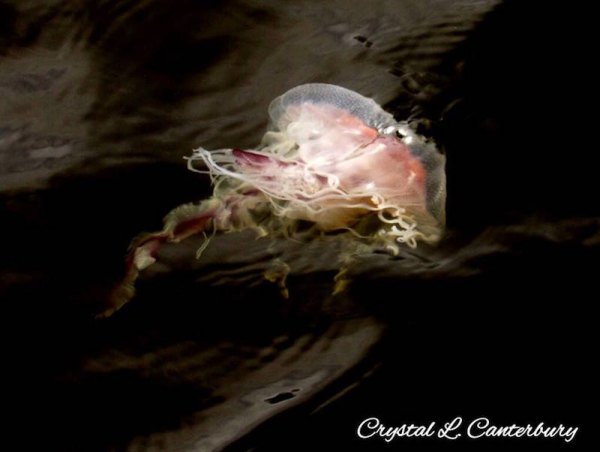
There’s so much cool stuff to see on the seashore, as well as in the sea and sound! On a calm day, you can observe sea jellies gracefully floating through the water of Silver Lake Harbor from the safety and convenience of the public docks! Some sea jellies have bell-shaped bodies and long tentacles; others are more like jelly balls. And some species of jellies even light up! How cool is that?
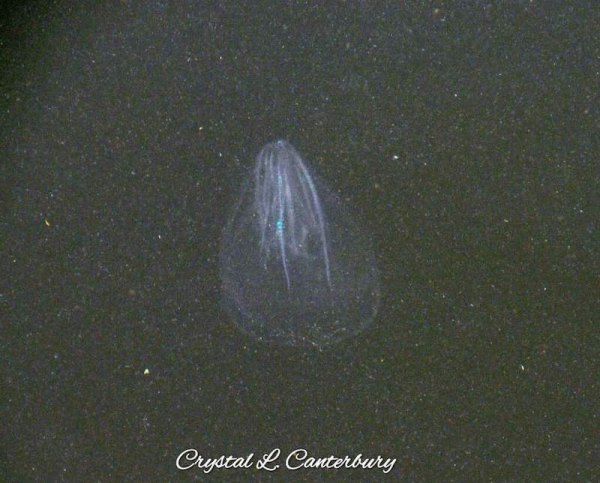
So, what are sea jellies? Sea jellies are more than just big globby stinging creatures. Some of these gelatinous (OMG I so love that word) marine creatures have bell-shaped bodies which fan in and out for movement, and tentacles which can be really short to many feet in length. These tentacles trail from the bell and are used to capture food and stun potential predators. Cool!
Others look like JELL-O jigglers gone wrong, but they have bioluminescence in their bodies which makes them glow and sparkle like underwater rainbows, which is definitely really cool. These jellies are called comb and walnut jellies, and while they have gelatinous bodies like other jellies, they are in a different class. Comb and walnut jellies are sort of like the distant cousins of the bell-bodied, trailing-tentacle jellies. In order to swim these jellies have what’s called “cilia” which, when grouped together, form what looks like a comb in the middle of their translucent bodies. Cilia are small, hair-like structures that allow movement through vibrations, and they care the largest animals to use cilia to swim. Comb and walnut jellies max out at about four inches long. Cool!
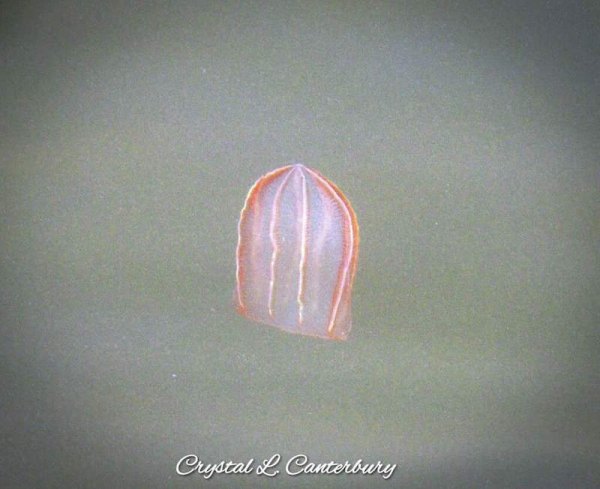
When we think of sea jellies, we seem to immediately cringe, possibly from a memory of being stung, or maybe recalling another person being stung. I only remember being stung by sea jellies once, and it was when I was kid swimming in or near the Chesapeake Bay in Maryland. I remember a sudden burning sensation all over my legs, which turned out to be jellyfish stings. Ouch! The stung spots tings turned into red splotchy areas that burned and sort of blistered. It was miserable. But not all sea jellies sting. Comb jellies, for example, do not have stinging cells, but don’t go picking them up! When taken out of water their pinkish bodies will begin to almost immediately break apart and deteriorate, so if you want to see one up close, scoop it out of the water using a clear container. The same goes for walnut jellies. These clear relatives to comb jellies have no stinging cells, and they react similarly when taken out of water. When comb and walnut jellies are disturbed they light up! They can create multiple colors, but you’ll mostly see them produce a bright green along their combs. Cool!
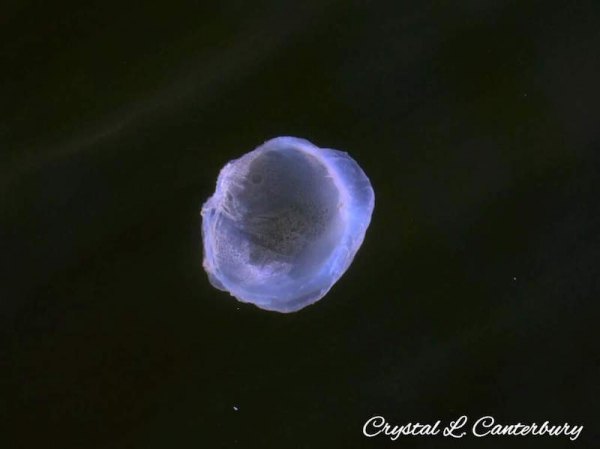
Common, or Moon jellies, are also harmless. These big disks of goppelty-goop just sort of float around with their tiny tentacles constantly in motion and grabbing for food. These jellies do have stinging cells, but they cannot penetrate our skin. Yay! Lately a lot of these jellies have been washing up onto Ocracoke’s beaches. They kind of look like stepping stones for the ocean, if the Atlantic Ocean had stepping stones that is.
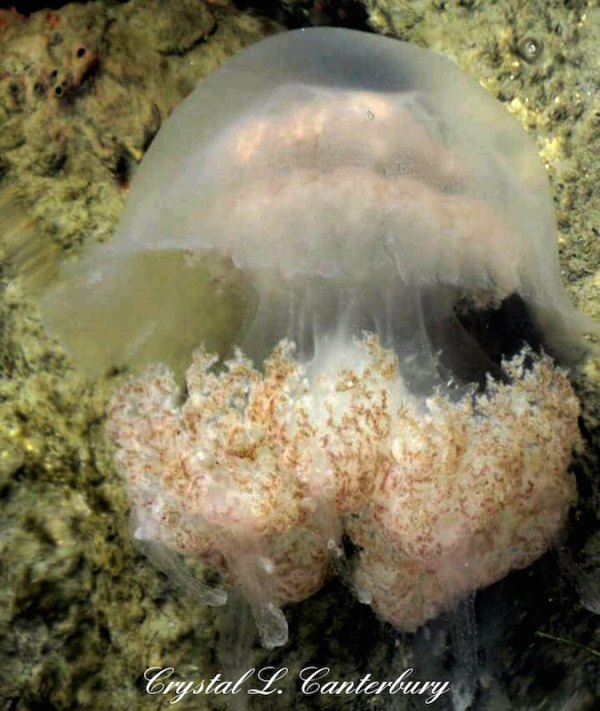
Cannonball jellies are named quite appropriately; they look like cannonballs! These jellies do not have lots of dangly tentacles. Instead, these drifting gelatinous balls have a cluster made up of arm-like formations that protrude from the bell. This cluster gets the jellies moving and serves as the jelly’s food gathering mechanism. Cannonball jellies don’t have stinging cells like the long tentacle-y jellies, but they do release a toxin in order to stun prey. This toxin, while not usually harmful to human or large animals, can cause heart rhythm problems on rare occasions. The toxin can also be an eye irritant, so if you startle a comb jelly, it may release its toxin. When it’s all said and done you’re essentially getting pepper-sprayed by a drifting gelatinous ball. And your reaction to the toxin will be similar to that of pepper spray: redness, swelling, and watering eyes.
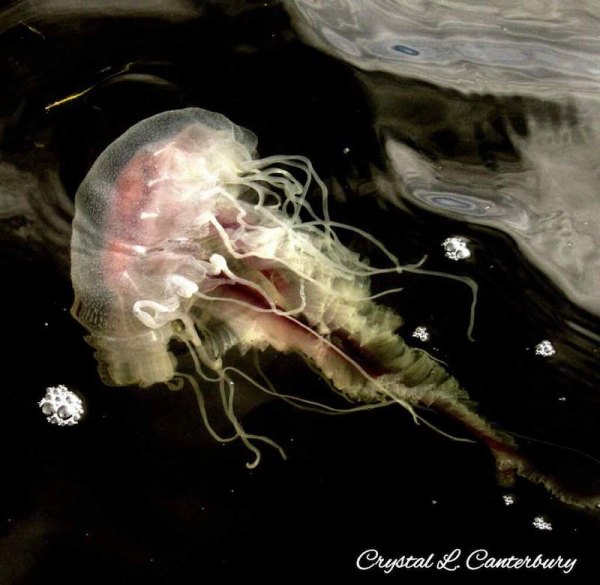
Sea nettles are one of the culprits of stings along the East Coast of the United States. These jellies, while beautiful, have long tentacles which will sting badly. Sea nettles can be seen showcasing different colors in various lengths. Many are clear or white, others have shades of pink and purple, and then there are some that are shades of brown and yellow. Sea nettles use their tentacles to stun their prey, but if we come in contact with these bellowing creatures we’re in for some pain. When threatened, sea nettles release thousands of tiny capsules filled with a toxin from their tentacles. When these capsules come in contact with another object the toxin is released, causing small creatures to die and larger creatures to break out in a rash. This is how they gather their prey, which is then carried into the bell for digestion.
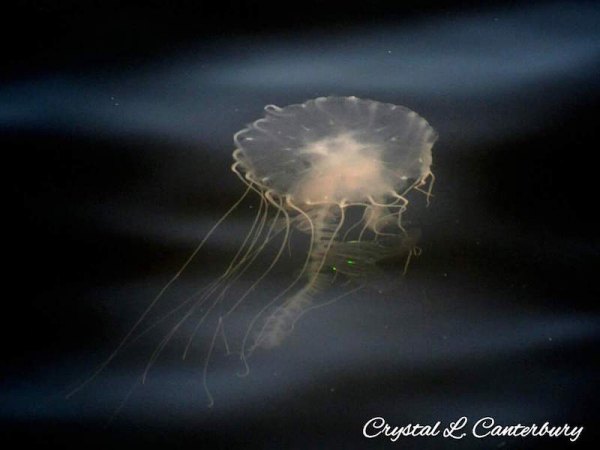
Since we aren’t a food source for sea nettles, a rash will form on our skin after coming in contact with the tentacles and capsules. If you get stung by a jellyfish, there are a few things you can do to ease the discomfort and pain. Soaking the area in vinegar for 15 to 30 minutes will help neutralize the toxin. You can also try to scrape out the capsules using a credit card. That sounds a bit painful to me though. If you have access to shaving cream or can make a paste of saltwater and baking soda, use those on the affected area. Once the shaving cream or paste has dried, scrape it off. That will help remove those toxin-filled capsules.
Keep your eyes peeled for cool stuff at the seashore! There’s an endless supply of cool out there!
